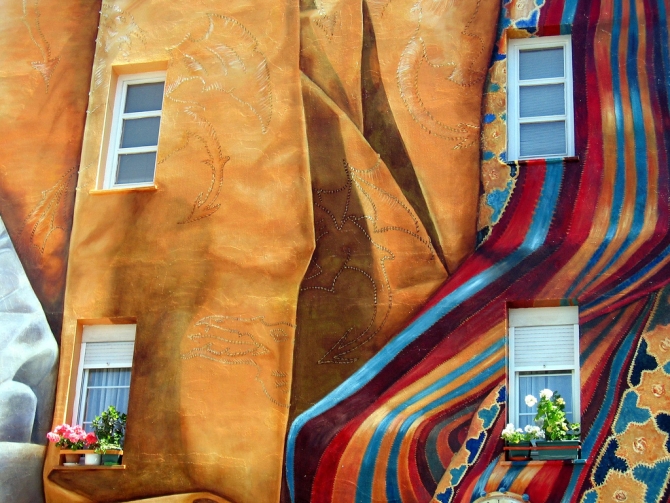It has been popular in Venice for centuries, but now one British city is planning to use the European technique of trompe l’oeil to cover up some of its ugliest buildings.

From next September thousands of fans will flood Gloucester for the Rugby World Cup. Rather than expose its international visitors to the “excesses” of 1960s and 1970s architecture the city council intends to hide six of its most unflattering buildings behind canvas and board panels.
Among the six “visually uninteresting” locations is the Southgate Street building which currently houses a Paddy Power betting shop and a B & M Bargains store. It will be covered by an intricately painted canvas recreating the 19th century hotel which once stood on the site.
The Kings Walk and Eastgate shopping centres and the bridge over East Gate Street, have also been branded “ugly structures” by the authority, as has Longsmith Street car park which will be hidden behind a “green wall” of climbing creepers.
Work on the £150,000 cover up will begin next February. Some of the trompe l’oeilwill be permanent, made up of coloured and textured panels, while others will simply be painted on canvas. All the projects should be completed by early summer.
The permanent cladding at King’s Walk will cost around £58,000. Covering up the East Gate link bridge will cost around £20,000 and wrapping up the Paddy Power and B & M building another £12,000. Work on the Longsmith Street car park will cost £11,000. All the money will come from the City Centre Improvement Fund, set aside from Tesco’s development of the St Oswald’s retail park.
After the public has been given the chance to comment on the designs a final decision will be made by the city’s cabinet and council officials. “The trompe l’oeil is a cheaper way of doing it in the short term, but the canvas will have a limited life span compared to more permanent cladding,” explained Gloucester’s cabinet member for regeneration, Paul James.
“It could look really striking and it will probably only last a couple of years, giving us the flexibility to change it over a period of time, rather than being stuck with a design for a long time.
“We want to show the city off in the best possible light,” he added. “But it’s is also about changing the perceptions of our city centre by removing these 1960s and 1970s interventions from the landscape.”
The scheme has already been welcomed by Gloucester City Centre Community Partnership. It’s chairman, Barry Leach, said: “Some of these buildings which have blank walls of concrete have little in the way of options left for them, so anything to improve their facade should be welcomed.”